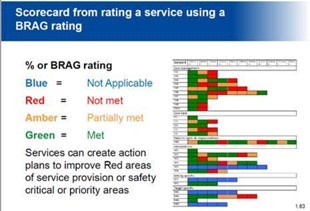UNODC Supports Central Asian Countries in Piloting Drug Use Disorder Treatment Services Quality Assurance Mechanisms/Tools

Background
Four Central Asia countries piloted the UNODC Quality Assurance (QA) mechanisms in 2019 with training and technical assistance provided by UNODC in 2018-2019. The countries involved were Tajikistan, Kazakhstan, Uzbekistan and Kyrgyzstan.
The activity was conducted within the framework of the UNODC global project GLOJ71: “Treating drug dependence and its health consequences: Treatnet II” and funded by the U.S. State Department Bureau of International Narcotics and Law Enforcement Affairs (INL).
Following training of experts in drug use disorder treatment from each country, teams of trained assessors selected standards, criteria and assessment methods from the UNODC Services QA tool for piloting. Countries focused on areas they considered were important to their country or that were known to require quality improvement. Piloting of the selected standards were conducted at 10 drug use disorder treatment services across 13 sites.
The report, prepared by UNODC International Consultant Ms. Annette Dale-Perera, presented the collated results of the four Central Asia countries participating in piloting the UNODC QA mechanism.
Results
There was a significant commitment by the four Central Asian countries to the piloting of the QA mechanism based upon the UNODC QA tool kit. The countries and participating services should be commended by their commitment to quality, and their diligence and fidelity to the UNODC recommended process.
In summary the assessment results indicated
- The majority of criteria were met in most services, 65% of common criteria chosen by all services and 76% of all criteria.
- The CA countries had clear strengths in relation to quality ‘enablers’ including national regulations, assessment procedures, patient record systems and staff record systems.
The key trends whether services met standards were
- The majority of Core Management criteria were met. However, some improvement was required (in two or more services) on: service plans being reviewed; staff training; clinical governance mechanisms; and patient consent. Moreover, with regard to Key Performance Indicators (KPIs), improvement was required on waiting times; occupancy rates; patients completing treatment and aftercare.
- Over half of Core Care standards were met: 21 criteria were met (57%) and 16 (43%) were not met or partially met. Improvement was required (two of more services) in all criteria especially patient having treatment plans in one country and patients having treatment plan reviews (in three out of four countries).
- The key trends on Patient Rights standards were that, in general, patients reported feeling respected. However, there was room for improvement in patients when it came to their involvement in assessment and treatment planning. Most countries could also improve patient involvement in service quality assurance and design.
- In relation to Interventions standards, some countries met some criteria on having protocols for interventions – particularly opioid pharmacological interventions. However, some improvement was required in a number of countries with respect to protocols for physical and mental health assessment; protocols for psychosocial interventions; protocols for pharmacological intervention for sedative drug detoxification; symptomatic prescribing and polysubstance use. All countries required recovery management protocols. There was also no evidence provided on whether the protocols had been established and were being used in services and this should be considered for phase2 of the QA process.
- On standards for different Treatment Settings; three out of four countries required improvement on outreach protocols.
- On standards for Patient Target groups, three countries required protocols on working with parents who use drugs including women.
Recommendations
Following the success of this pilot, a review of the pilot and a phase 2 roll-out of a regional QA mechanism was recommended. This could include:
- The standards and criteria used by the four Central Asian countries in the pilot should be reviewed and aligned with the latest ‘International Standards for the Treatment of Drug Use Disorders (WHO/UNODC 2020) and UNODC Services QA Toolkit 2020.
- Development of an agreed set of ‘consensus standards’ and criteria for the region (including KPIs) to foster sharing of good practice, comparison and peer audit. Countries could also put in place ‘extra’ optional criteria in addition to these if required.
- In a phase 2 QA roll-out, Intervention criteria should include whether protocols are established within services and whether documents exist. This would indicate whether the staff were following evidence-based, agreed practice.
- The QA roll-out should ideally have agreed methodologies including patient surveys and how they are reported, could be strengthened in a future training and roll-out of the QA mechanism, to ensure fidelity.
A second phase of training and technical support provided by UNODC to enable the consolidation of the QA mechanism for roll-out was also recommended. This will take place in October 2020.